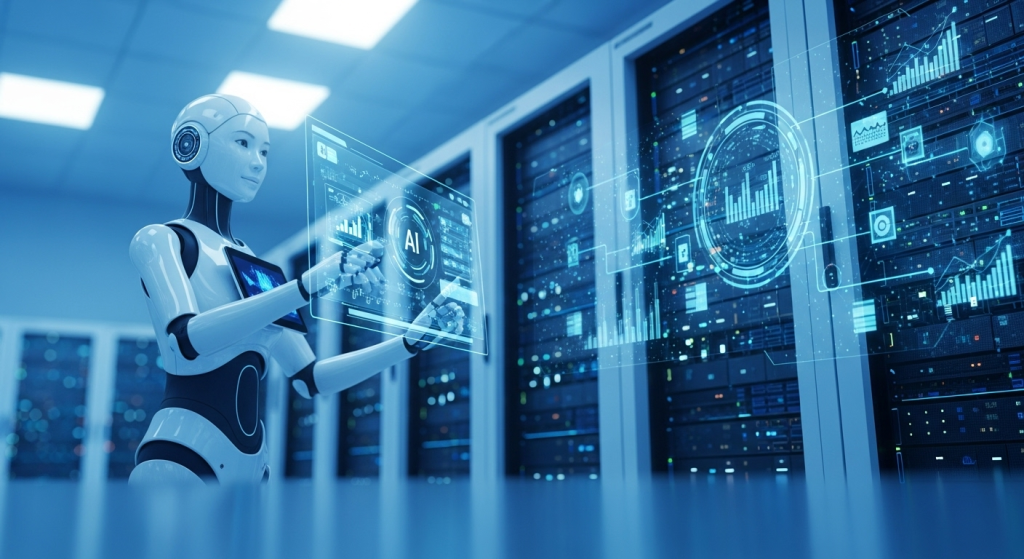
In our last article, we discussed how companies of all sizes are struggling to keep up with the dynamically changing business environment. Typically, ERPs have been an engine for managing operations. While they are excellent at managing mainstream business processes, unfortunately, most ERP implementations are too rigid to quickly or effectively adapt to businesses’ dynamic operations, causing the large number of corner cases.
We explained how corner cases, the number and variety of processes that do not fit within the ERP functional mandate, are continuing to expand. These scenarios are not fully anticipated when the ERP platforms are designed and they usually cause issues. As the business environment becomes more complex, addressing corner cases becomes time consuming, tedious and may not be accurately reflected by the ERP. Given their growth, dealing with corner cases requires a large expenditure of workers’ time. This pain point has driven efficiency goals and led to an unprecedented level of ERP transformation; which entails replacing legacy ERPs with new systems — alongside the management, hosting and provisioning of the new ERP platform and its substantial onboarding process.
We also highlighted the problems inherent in a rip-and-replace ERP transformation strategy. We uncovered a spectrum of issues; from known costs to the many hidden costs. Critically, the fundamental problem of dealing with corner cases is not addressed with the rip-and-replace ERP transformation strategy, because heavy customization within the ERP platform is not cost effective to implement. Thus, a business is outlaying significant expenditures for a new system that does not fix its problems.

To overcome these issues, leveraging AI augmentation to a legacy ERP platform is a much better and cost effective strategy for ERP transformations. The power of effectively implementing AI rests in delivering a single, flexible interface that can handle many corner cases. The cost of adding that flexible interface to the ERP is much easier to justify compared to individual customizations for individual corner cases within the ERP platform. Additionally, these AI-based customizations take much less time and revitalize existing ERP assets.
On a more granular level, we have outlined how ERP AI augmentation is more effective and efficient, while being much less disruptive to the business than the rip-and-replace strategy:
| Factors to Consider | Rip & Replace Strategy | AI ERP Transformation |
| Software Licensing | The cost of the new ERP software itself can range from $10,000 to $250,000 per year for smaller businesses and up to $10 million annually for large enterprises. | Purchase and licensing fees for AI ERP Augmentation are much less expensive in the short term and the long term. While typical AI ERP Augmentation implementations cost six figures, doing so revitalizes and extends the existing ERP asset. |
| Implementation Costs | Implementation costs, including consulting fees, can add anywhere from $20,000 to $250,000+ to the price of the software, while still not addressing corner cases. | Implementation costs are approximately the same. However, the AI network becomes the new user interface, making for easy integration with the existing ERP platform, while addressing most, if not all all, corner cases. |
| Hidden Implementation Costs and Delays | Implementations can sometimes take years and can pull managers and IT personnel ‘off line’ on a full-or part-time basis, as a business-side stakeholder, when making adjustments on workflow, interfaces, etc. | AI-augmentation allows workflows to be more flexible than with legacy or recently purchased ERP platforms. The AI networks become the user interface and are flexible enough to be quickly reconfigured as needed. AI can allow workflows to proceed based on logical business rules which can be easily updated. |
| Customizations | Costs for customizations to dashboards, workflows or user interfaces can add up quickly, especially if significant development is required. Typically, customizations on ERPs take much longer and cost more than customizations for smaller scoped systems. | The new AI networks allow for infinite customizations that can be implemented quickly within the framework of agreed upon business rules. |
| Data Democratization | Being able to capture and process new kinds of data, at finer levels of granularity, is difficult to achieve and can add additional costs. Migrating data from the legacy system to the new one is a significant undertaking, with data complexity and migration methods driving the final price tag. | AI augmentation redefines data democratization (delivering the right information to the right people at the right time) with easy options to explore more for better and faster decision making and to facilitate innovative actions. Better data provides executives with the valuable, real-time information they need to make better business decisions – orders of magnitude faster than a legacy ERP system can be transformed. |
| Training | Training users on the new ERP system is essential for successful adoption and will add to the overall cost. | Because the AI networks are layered on existing ERP platforms, there is no need to retrain; new capabilities can be requested by users and made available with added drop downs. |
| Ongoing Costs | Ongoing costs for software maintenance and support will be necessary. Upgrades should be anticipated and businesses will need to factor in wait times for vendors to provide new functionality. | Ongoing costs are much lower. Once the AI networks are in place, upgraded functionality can be provisioned in days and weeks instead of years. |
| Downtime | Swapping from one platform to another – even with the same brand – can cause significant downtime and lead to a loss of efficiency. | Downtime is not a factor because the ERP is not being replaced. New AI networks add functionality in a less disruptive manner. |
| Module Integration & Availability | Point solutions integrated into today’s ERP platforms will not necessarily be available or easily integrated into newly acquired ERP platforms. | AI augmentations can also integrate point solutions that “bolt on” to an ERP platform. They are seamless because, for the first time, they can interact directly as well as through the ERP platform. Again, AI networks become the de facto user interface, allowing better data collection and management while rapidly adapting and adding new workflows tailored to address new corner cases. |
| Corner Cases | ERP will still be impaired because of its ongoing inability to address corner cases – typically from day one. It’s not cost effective for the company because the total cost of solving a single use case by the vendor is far greater than the efficiency gained for that one use case. | AI systems that augment a legacy ERP significantly reduce corner cases and provide a more flexible interface than a traditional ERP. This allows for more flexibility as a company grows and changes. |
A strategy of ERP Transformation through AI ERP augmentation is much less expensive and disruptive than the typical rip-and-replace ERP implementation. Companies of all sizes should examine this approach before thinking about undertaking a rip-and-replace program.
Ken Fischer
Ken Fischer is the CEO of Atigro, the proven ERP transformation firm that pairs its modular augmentation capabilities with AI-native frameworks. Atigro’s experience and capabilities generate the rapid development and provisioning of new ERP functionality that meets dynamically changing business processes.




